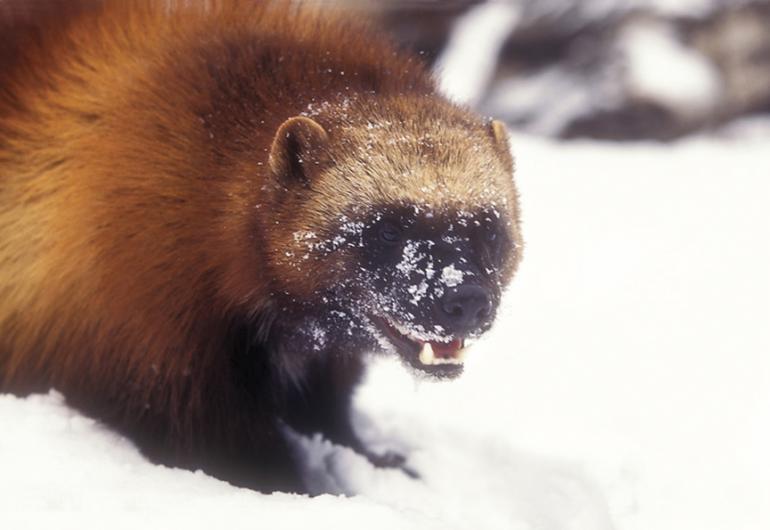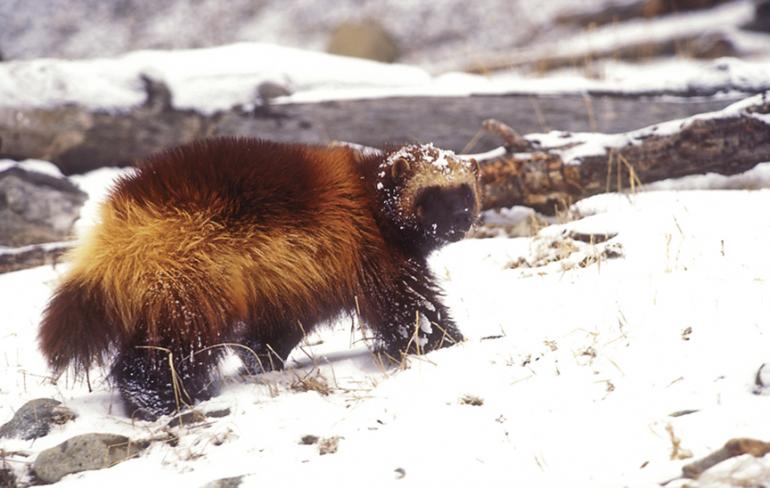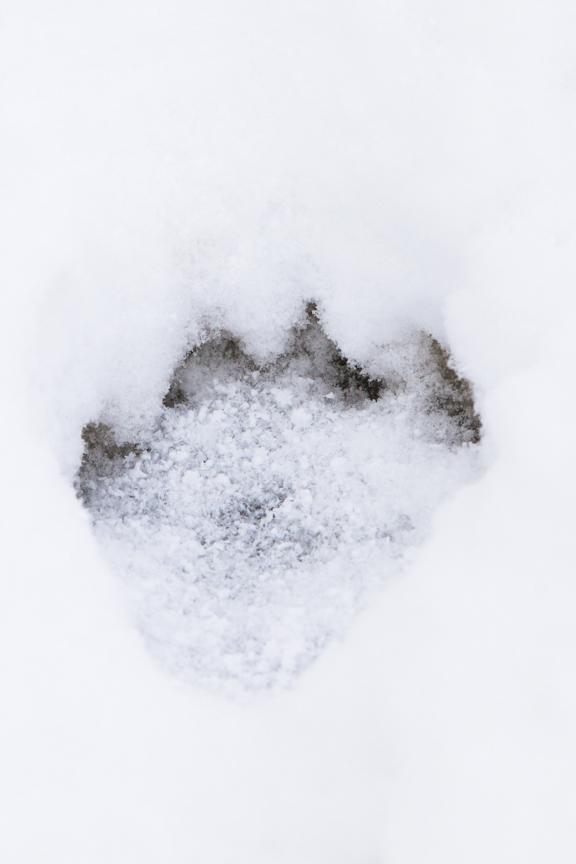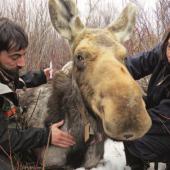Catch & Release
With the snow falling in Bozeman, local biologists from the United States Geological Survey (USGS), in collaboration with the Forest Service, are underway with another season of capturing wolverines. It’s an ongoing project to profile and track the elusive animal, to assess the effects of trapping, range reduction, habitat fragmentation, and general diminution. Hopefully, the data collected will be able to show quantitatively whether or not wolverines should be included on the endangered species list. The study also collects valuable genetic data, assesses lifestyle, teaches us about individual and social behavior, and monitors the health and parasite burden of the seldom-seen Montana native Gulo gulo.
After baiting log-box live traps, field technicians monitor the traps daily by visiting them on foot and remotely checking motion-activated cameras placed around the areas. As the availability of food becomes scarce, cameras catch more and more wolverines investigating the traps. Once a wolverine is caught in a trap, the field team quickly makes preparations and moves on-site within a few hours—no matter what time of the day or night.
Snowmobiles and snowshoes help research teams pack equipment—radio collars, surgical tools, oxygen tanks—into the remote sites. By the time the biologists arrive, field technicians have already sculpted out a solid snow table near the trap for the upcoming procedure. Since wolverines are known for their ferocity and strength, logs are emplaced to distract the stocky, muscular carnivore from chewing at the sedative dart shot into his hind leg.
The health and survival of the animal is the team’s first priority. To ensure the wolverine’s safety, it is not removed from its habitat, a trained field biologist under veterinary direction uses reversible anesthesia and oxygen, and all precautions are taken to maintain its body temperature and vital signs. Speed is of the essence—especially during the spring when female wolverines come out of their snow dens briefly to scavenge before returning to feed their kits.
Once the animal is soundly asleep, the biologists identify it, fit it with a radio collar, and surgically implant a GPS tracking device inside its abdomen. Since a wolverine’s neck is almost as broad as its head and collars can slip off easily, the collar is backed up with an implanted tracking device. Samples are collected for analysis and genetic testing, and measurements are recorded. Occasionally, the animal has been previously captured and implanted, so additional follow-up data is collected to assess changes in weight and health.
Overhead surveillance planes detect the animal’s collar and implant, ensuring non-invasive data-collection methods in the years after a wolverine’s been trapped. Once the animal has been recorded in one place for a period of time, a team of field biologists travels to the area to collect samples of fur and scat from the den. This tracking has helped show that a wolverine can range hundreds of miles in a matter of weeks. Males typically have a range of around 240 square miles, encompassing the turf of three or more females with a range of around 100 square miles each.
Wolverines’ requirement for large territories and their low population density often bring them into conflict with human development. And with hunting and trapping further reducing their numbers, wolverines appear to have already disappeared from large parts of their former ranges. In 2010, it was estimated that in the states of Montana, Idaho, and Wyoming, there were only 28-52 individual wolverines; the world’s total wolverine population remains unknown. The work of the USGS and other expert wildlife teams helps improve the world’s understanding of the animal so this elusive species can fully recover—and eventually, thrive.
Sarah Lavelle owns Ark Veterinary Practice and has been serving the Gallatin Valley's animals and owners as a mixed animal practitioner for over ten years.















